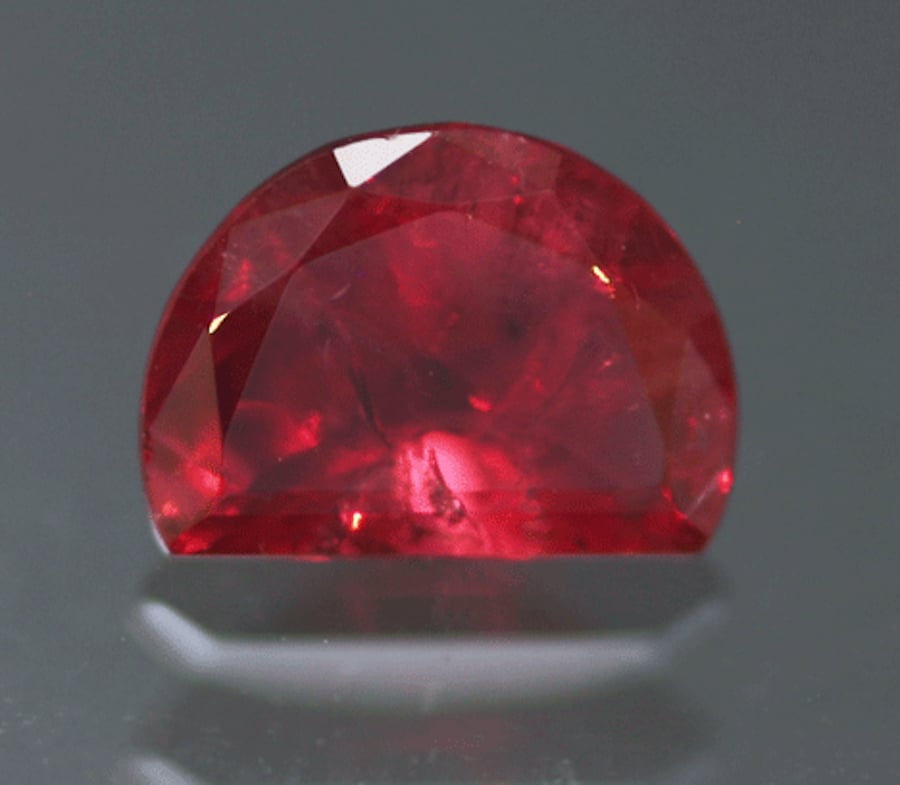Red Beryl Value, Price, and Jewelry Information
Originally known as bixbite, red beryl is one of the rarest, most desirable, and most expensive gemstones. Most fine crystal specimens are zealously guarded by mineral collectors and are never faceted.
1 Minute Read
Originally known as bixbite, red beryls are some of the rarest, most desirable, and most expensive gemstones.
Start an IGS Membership today
for full access to our price guide (updated monthly).Red Beryl Value
The great rarity of this material and its popularity with collectors mean that almost any sized piece in any clarity and color grade can find a ready buyer.
Does Red Beryl Make a Good Jewelry Stone?
Like most beryls, red beryl would make an excellent jewelry stone. However, most fine crystal specimens are zealously guarded by mineral collectors and never faceted. Few crystals even approach gem quality. Lapidaries cut fewer than 10,000 stones per year, with more than 95% of those being melee, mostly in lower grades.
Treat any red beryls set in jewelry with the same caution as emeralds, another variety of beryl. Although red beryls have an exceptional hardness of 7.5 to 8, they may have many inclusions. As a result, extremely rare faceted pieces may also receive fracture fillings. These gems require protective settings, especially if worn as ring stones. However, you'll more likely encounter these stones in a mineral collection than a jewelry collection.
The best faceted red beryls would have a raspberry pink to slightly purplish red color and be no more than slightly included. The rule of exponential increase in price with increase in carat weight definitely applies to this gem, so often found in sub-carat sizes. With these gems, cut is an afterthought, value-wise. Faceters will try to produce the largest possible finished gems from their prized rough. As a result, the majority of these stones have windows and poor proportions.
Are There Synthetic Red Beryls?
Synthetic red beryl manufactured in Russia has entered the gemstone and jewelry market. However, these hydrothermally lab-grown gems do have some properties that distinguish them from natural materials. Consult this 2001 GIA article for detailed information.
Where is Red Beryl Found?
Only one location, the Wah Wah Mountains in the American state of Utah, is known to produce gem-quality red beryls. In the past, various commercial mining ventures have had sporadic success in producing stones, but a new enterprise, using more modern methods, is doing better.
Unlike other beryls, red beryl occurs in white volcanic rhyolite.
How to Care for Red Beryl Gemstones
For cleaning and maintenance purposes, treat red beryls like emeralds. Never use mechanical cleaning methods, such as steam or ultrasonic systems. They may cause inclusions to burst, which can shatter your gemstones. Instead, use only warm water, detergent, and a soft brush for cleaning. Of course, you can also take your red beryls to a professional jeweler familiar with these rare gemstones.
Consult our gemstone jewelry care guide for more recommendations.
Joel E. Arem, Ph.D., FGA
Dr. Joel E. Arem has more than 60 years of experience in the world of gems and minerals. After obtaining his Ph.D. in Mineralogy from Harvard University, he has published numerous books that are still among the most widely used references and guidebooks on crystals, gems and minerals in the world.
Co-founder and President of numerous organizations, Dr. Arem has enjoyed a lifelong career in mineralogy and gemology. He has been a Smithsonian scientist and Curator, a consultant to many well-known companies and institutions, and a prolific author and speaker. Although his main activities have been as a gem cutter and dealer, his focus has always been education. joelarem.com
Barbara Smigel, PhD. GG
Barbara Smigel is a GIA Graduate Gemologist, faceter, jewelry designer, gem dealer, gemology instructor and creator of the well-regarded educational websites acstones.com and bwsmigel.info.
International Gem Society
Related Articles
10 Gemstones Rarer than Diamond: The Earth’s Scarcest Treasures
What Causes Emerald Fractures?
Black Diamond Value, Price, and Jewelry Information
Chameleon Diamond Value, Price, and Jewelry Information
Latest Articles
Ruby and Sapphire Survey: Where Do You Draw the Line?
Quartz Toxicity: Understanding the Risks for Jewelers and Wearers
Synthetic Amethyst: What is it and How is it Made?
Hambergite Value, Price, and Jewelry Information
Never Stop Learning
When you join the IGS community, you get trusted diamond & gemstone information when you need it.
Get Gemology Insights
Get started with the International Gem Society’s free guide to gemstone identification. Join our weekly newsletter & get a free copy of the Gem ID Checklist!
